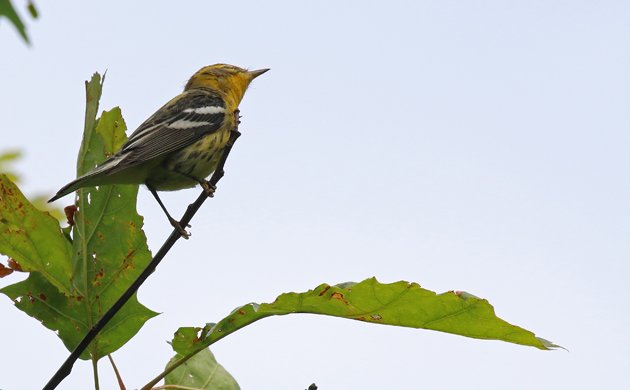
This past weekend I was disconnected from the internet, stuck in the woods without electricity, reduced to sleeping in a shelter made of fabric, and cooked meals over an open fire. No, I wasn’t being punished, the apocalypse had not come, and I was putting myself through these privations voluntarily! That’s right, I, along with my family and some really good friends, was camping. Our campsite was gorgeous North Lake State Park in the Catskill Mountains of upstate New York, where the air is crisp, the forests are largely intact, and the bears force you to be careful about leaving food out when you go to sleep. In other words, it is an awesome place. (And one that I have written about before when I was pleased to find Blackburnian Warblers like the one above breeding.)
Our campsite, which we chose serendipitously because it was the only one available when we reserved it at a very late date, was as close to perfect as a campsite could get. It was big, private, right next to the lake, and well-maintained. It also had nesting Gray Catbirds, fledgling Chipping Sparrows, singing Red-eyed Vireos, and a patch of jewel weed that attracted Ruby-throated Hummingbirds.
Here a fledgling Chipping Sparrow, which is one of those confusing, streaky, brown birds, gets stuffed by an adult.
We spent our days swimming, hiking, playing, and relaxing. We spent our evenings cooking, playing cards, enjoying adult beverages, and listening to Barred Owls duets. On Friday night in particular there was a pair of Barred Owls that went through a full repertoire of Barred Owl sounds. It was amazing and one of those moments that even the completely non-birders appreciated.
And, of course, as I do sometimes, I managed to sneak in a bit of birding. Not a lot, mind you, as with two kids in our campsite, lots of people to cook for, and only a weekend’s worth of time available I couldn’t disappear too much. Fortunately the birds mostly came to me and I just had to keep my binoculars and camera handy.
As always during spring and summer, it is impossible to miss Blackburnian Warblers at North Lake. Check out my mom’s blog post where she has a nice shot of my father and I looking at the wood-warblers.
This Red-eyed Vireo had just swallowed a very large bug. Well, mostly swallowed a very large bug. There is still some bug to go.
The Eastern Chipmunks sure enjoyed the fact we had a five-year-old and a four-year-old at our campsite.
But my favorite sighting of the weekend was a whole family of Eastern Phoebes, four fledglings and at least one adult, that I found hanging around a small patch of trees and brush near the beach. I like phoebes. And the adorableness of four fledglings on one branch was just too good to pass up.
How cute is this?
Mom has a bug! Feed me! Feed me! Feed me!
Nom nom nom nom nom.
I am adorable!
If you want to experience the awesomeness of North Lake State Park you can start by checking out the New York State Department of Environmental Conservation web page on the park. (By the way, the actual name is now North-South Lake because years ago they dug a second, connected lake, but that is just a silly name.) If you want to camp there don’t rely on serendipitously getting a good spot – reserve early! Oh, and you have to provide your own kids. But they are pretty much the best part of going camping…
Desi and Javi in “war paint” doing their best “warrior” look. You’ll remember Javi from whale-watching.
…


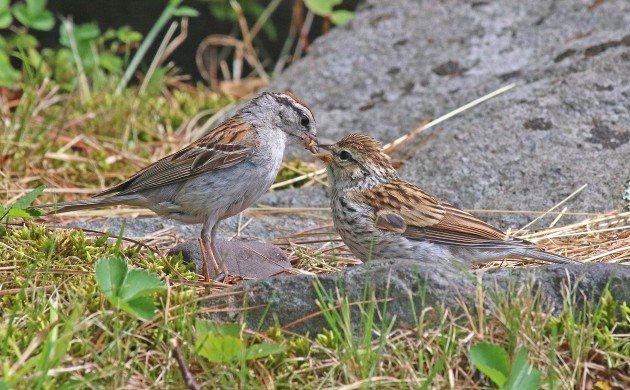
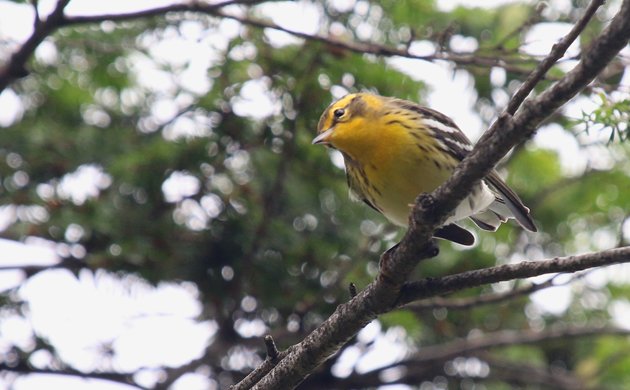
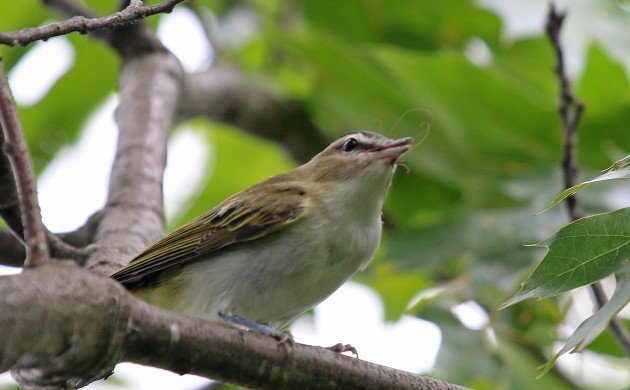
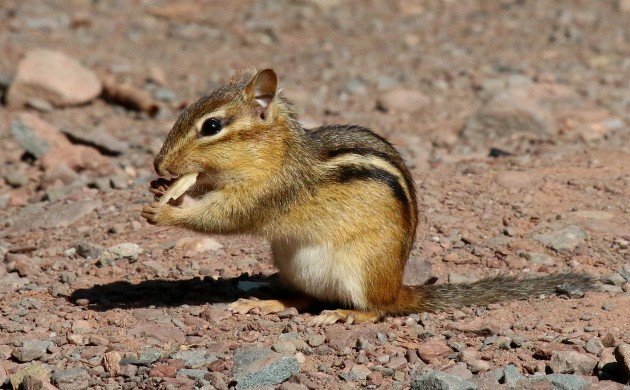
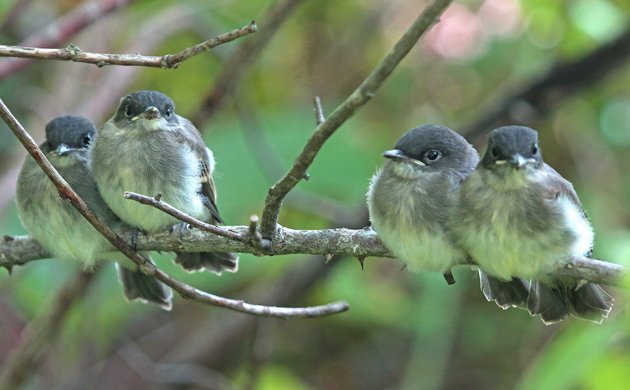
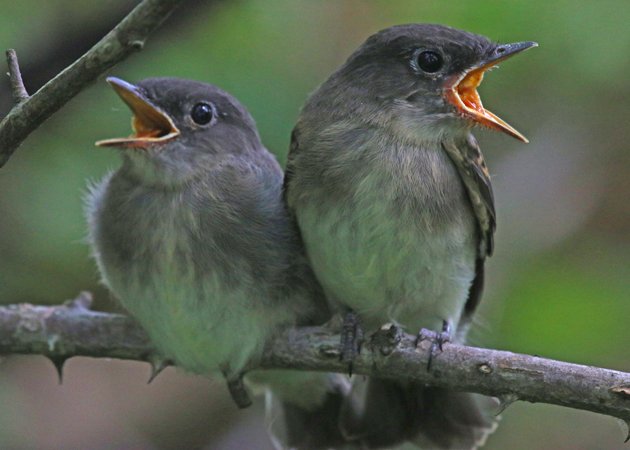
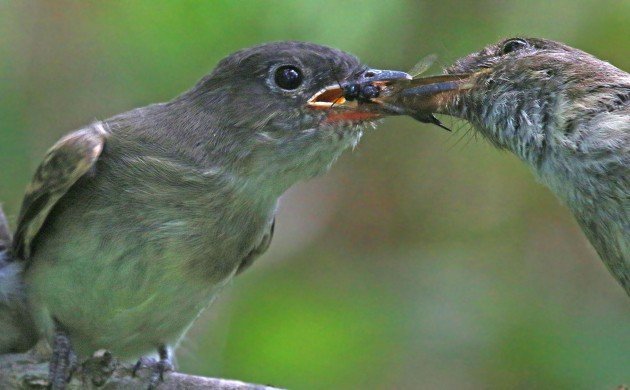
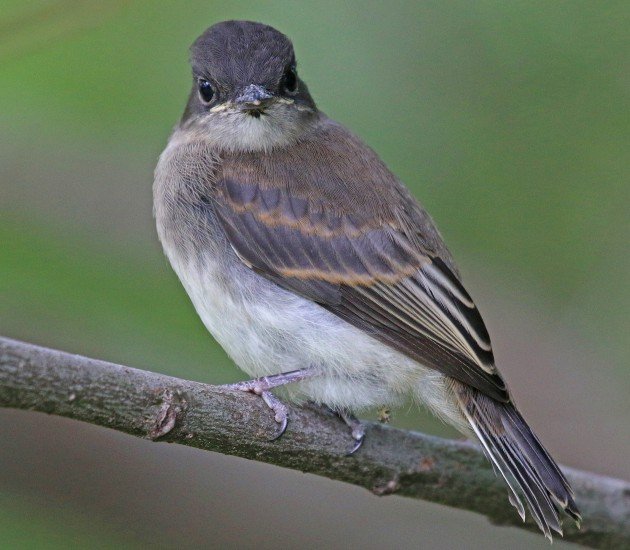
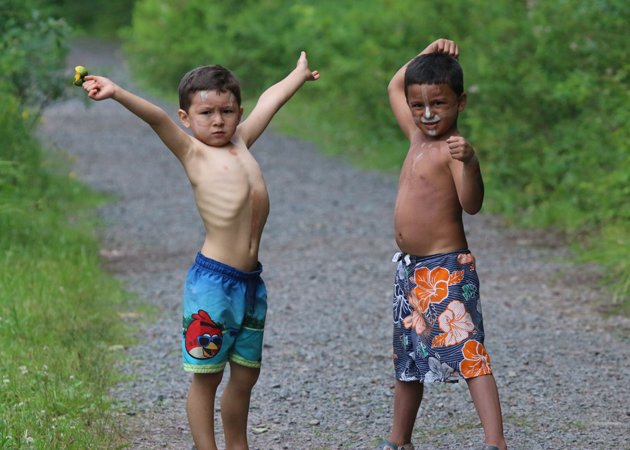











I’m familiar with that location because my family used to vacation near there when I was a kid. It’s a great park, with some great hiking nearby.
Love the family of phoebes! From the look on their faces, they seem like they could be a handful. Thanks for sharing.
Great reminder about how much fun camping can be. And really great Phoebe sequence!